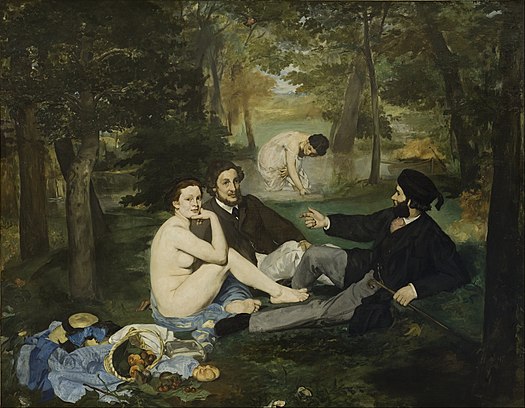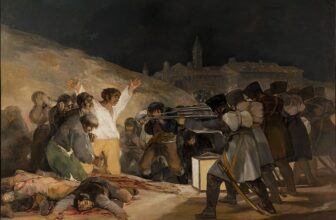
Le Déjeuner sur l’Herbe: Unveiling the Controversial Masterpiece
Le Déjeuner sur l’Herbe, translated as “Luncheon on the Grass,” is a groundbreaking and controversial painting that has left an indelible mark on the history of art. Created by the French artist Édouard Manet in 1863, the painting defied conventional norms and challenged the art world, igniting debates and discussions that continue to this day. Let us delve into the meaning, worth, location, and the reasons behind its significance and enduring impact.
- The Meaning of Le Déjeuner sur l’Herbe:
The painting depicts a group of individuals leisurely having a picnic on a grassy clearing. Two fully clothed men sit alongside a nude woman, who gazes confidently at the viewer. Another female figure, partially dressed and presumably the servant, stands nearby. The composition is bold, with the figures placed directly in the foreground against a rich, wooded background.
The meaning of Le Déjeuner sur l’Herbe has been the subject of much interpretation. Manet’s portrayal of a nude woman among fully dressed men was perceived as scandalous, as it defied the conventional depictions of women in art. The provocative juxtaposition of nudity and contemporary clothing challenges societal norms and questions the boundaries of acceptable subject matter in art.
- The Worth of Le Déjeuner sur l’Herbe:
From an artistic and historical standpoint, Le Déjeuner sur l’Herbe is considered priceless. Its significance lies in its role as a pioneering work of modern art. By defying academic conventions and depicting a scene that shocked and intrigued viewers, Manet set the stage for the emergence of Impressionism and other modern art movements.
As for its monetary worth, it is challenging to determine a precise value. Le Déjeuner sur l’Herbe is housed in the Musée d’Orsay in Paris, one of the most prestigious art museums globally, making it a centerpiece of its collection. However, due to its cultural significance, the painting is considered irreplaceable and is unlikely ever to be sold.
- Location and Display of Le Déjeuner sur l’Herbe:
Since its creation, Le Déjeuner sur l’Herbe has been displayed in various locations. Currently, it is exhibited in the Musée d’Orsay, where it attracts art enthusiasts and scholars from around the world. Its prominent location in this museum solidifies its status as an essential piece of art history.
- Why Le Déjeuner sur l’Herbe Is So Significant:
Le Déjeuner sur l’Herbe is famous for its revolutionary approach to subject matter and composition. At a time when academic art strictly adhered to historical, religious, or mythological themes, Manet’s painting challenged the establishment with its daring and modern portrayal.
The painting was met with harsh criticism and controversy when it was first exhibited at the Paris Salon in 1863. Its unconventional treatment of the nude figure and its realistic portrayal of modern life shook the artistic community and ignited discussions about the boundaries of art.
By introducing a new, unorthodox artistic language, Manet paved the way for later generations of artists who sought to break away from traditional conventions. Le Déjeuner sur l’Herbe marked a turning point in the history of art, giving birth to the Impressionist movement and influencing numerous artists who followed.
Le Déjeuner sur l’Herbe is much more than a simple picnic scene; it is a groundbreaking work of art that redefined the trajectory of modern art. Édouard Manet’s audacious portrayal of a nude woman among fully clothed men challenged societal norms, sparking controversy and conversations that continue to resonate today. As an irreplaceable cultural treasure, this masterpiece remains a symbol of artistic innovation and rebellion against traditional norms, inspiring generations of artists to push the boundaries of their craft and challenge the status quo.






